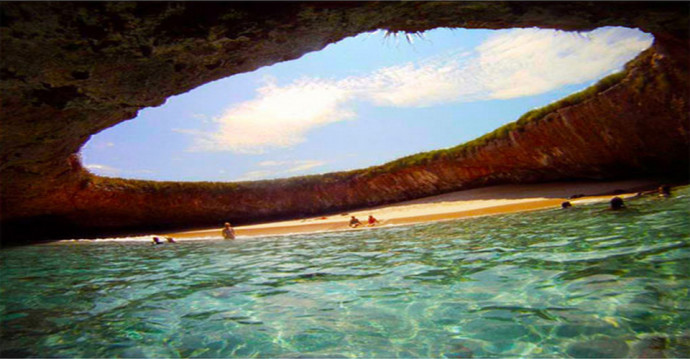Mexican environmental authorities say they will temporarily close a popular beach off the Pacific state of Nayarit because of damage from too many tourists.
The National Commission of Protected Natural Areas said in a statement Thursday that during the two-week Easter vacation season more than 27,000 people visited tiny "Love Beach" in the Marietas Islands National Park.
The unusual beach is a small crescent of sand at the bottom of a hole in the island that has become an Internet sensation. It is accessible only by swimming in . . .






